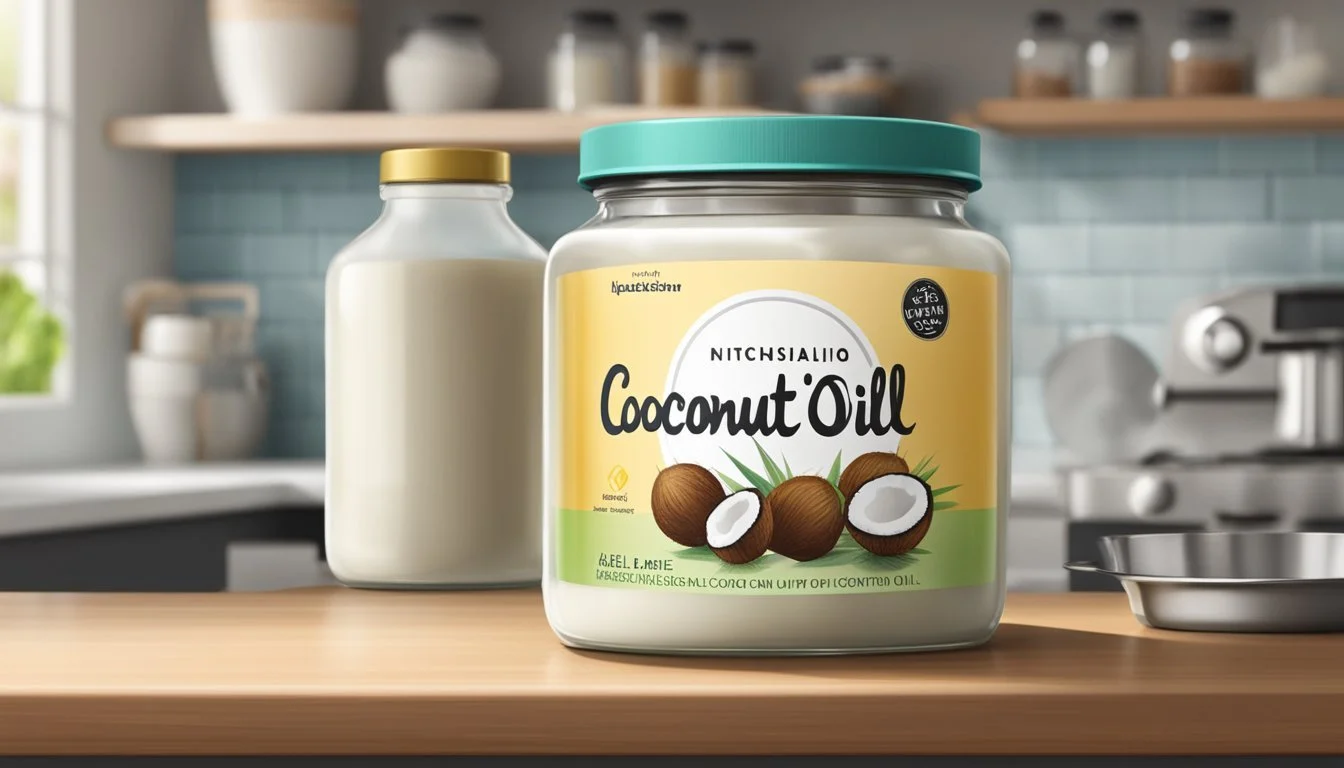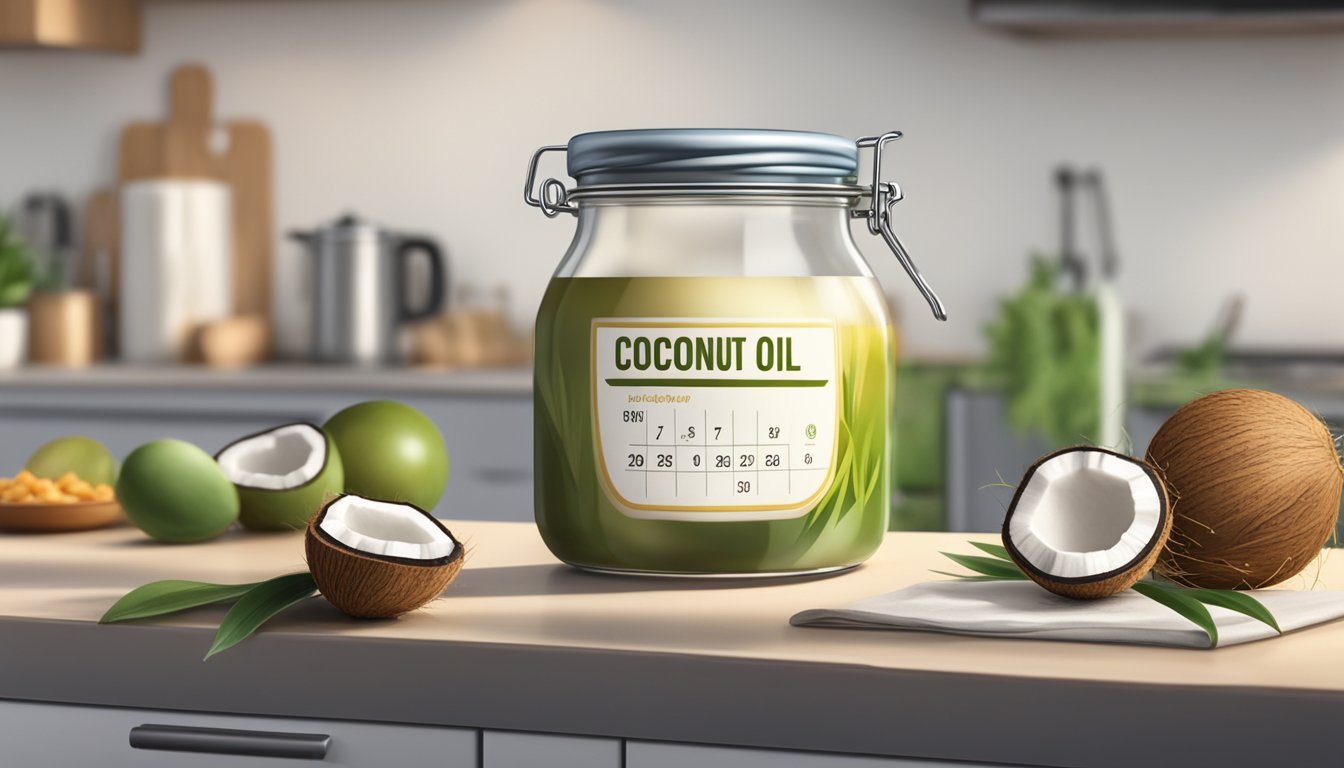Does Coconut Oil Go Bad?
Understanding Its Shelf Life and Spoilage Signs
Coconut oil is lauded for its impressive shelf life and myriad of uses, ranging from culinary delights to skincare. Yet, like all natural products, coconut oil is not immune to degradation over time. The longevity of coconut oil largely depends on how it's processed and stored. Refined coconut oil typically lasts up to 18 months, while virgin coconut oil can remain fresh for up to five years under the right conditions. However, improper storage can accelerate spoilage, rendering the oil unsuitable for use before the stated expiration date.
The quality of coconut oil can be assessed through sensory changes that are easy to detect. When coconut oil begins to spoil, it often exhibits a distinct change in smell, taste, and color. Fresh coconut oil should smell and taste mildly sweet and nutty; any deviation, such as an acrid or sour odor, signals that the oil has gone bad. In its pure state, coconut oil maintains a smooth texture and a clear or slightly opaque appearance. Any signs of mold or a rancid smell indicate that the oil's quality has diminished and it should not be consumed or used for skincare.
Ensuring coconut oil remains in good condition involves proper storage – away from moisture, light, and heat, all of which can induce rancidity. Keeping coconut oil in an airtight container, in a cool, dark place, will help maintain its quality. Observing these storage guidelines can ensure that coconut oil retains its beneficial properties and remains safe for use, whether in the kitchen or as part of a beauty regimen.
Understanding Coconut Oil
Coconut oil is revered for its versatility, used in everything from cooking to skin care. Its variations and extraction methods offer distinct properties, and its purported health benefits have garnered attention across various domains.
Types of Coconut Oil
Virgin Coconut Oil is extracted from the fresh milk of the coconut and is not subjected to heat. It retains its natural aroma and higher levels of antioxidants. Refined Coconut Oil, on the other hand, is extracted from dried coconut meat known as copra. During the refining process, it is bleached and deodorized, resulting in a neutral flavor but reduced nutrient content.
Virgin Coconut Oil: Higher in antioxidants, natural aroma
Refined Coconut Oil: Neutral flavor, less nutrients
Unrefined Coconut Oil generally refers to virgin coconut oil, as it is less processed. Both virgin and unrefined types typically contain high levels of saturated fat, with a significant proportion being lauric acid — a medium-chain fatty acid known for its antimicrobial properties.
Extraction and Refining Process
The extraction process for coconut oil can vary. Virgin coconut oil is often produced through cold pressing, where the oil is mechanically extracted without the use of high temperatures. The refining process for coconut oil typically includes cleaning, bleaching, and deodorizing. This process aims to remove impurities and result in a more stable product with a longer shelf life.
Cold Pressing: Maintains nutrient content, no high heat
Refining Process: Includes cleaning, bleaching, deodorizing
Health Benefits
Coconut oil's high lauric acid content contributes to its antimicrobial properties, potentially benefiting the immune system. The saturated fat in coconut oil has been linked to increased metabolism and energy, which some claim can aid in weight loss. It is also commonly applied as a hair treatment to improve scalp health and as a moisturizer to address skin problems.
Metabolism: May boost metabolism and energy levels
Skin and Hair Treatment: Moisturizes skin and improves hair health
When assessing the health impacts of coconut oil, one should consider the presence of saturated fat and the form of coconut oil used — whether virgin or refined.
Shelf Life and Spoilage
Understanding the shelf life of coconut oil and recognizing the signs of spoilage are essential to ensure safe and optimal use. This segment of the article delves into what affects the shelf life, how to identify if coconut oil has gone bad, and the nuances between expiration and best-by dates.
Factors Affecting Spoilage
Temperature: Coconut oil should be stored in a cool, dry place away from direct sunlight. High temperatures can accelerate rancidity.
Light: Exposure to light can degrade the quality of coconut oil over time.
Air: An airtight container is crucial to prevent oxidative damage from air exposure.
Moisture: Coconut oil can spoil if it comes into contact with water or high humidity environments.
Spoilage Signs and Symptoms
Color: Pure coconut oil is white in its solid form and clear to slightly yellowish when liquid. Any discoloration, such as a yellow or brown tinge in solid form, may indicate spoilage.
Smell: Fresh coconut oil has a subtle, sweet aroma. A rancid, sour, or stale smell is a clear sign that it has gone bad.
Taste: A bitter or otherwise off taste is a strong indication that coconut oil should not be consumed.
Expiration vs. Best-By Dates
Expiration Date: This indicates the date after which coconut oil is not recommended for use.
Best-By Date: This is the manufacturer's estimate of when the product will start to decline in quality, not necessarily when it is unsafe to use. However, it's important to inspect the product for spoilage signs post best-by date.
Proper Storage Techniques
To maintain the quality and extend the shelf life of coconut oil, proper storage is crucial. Various factors such as temperature, light, and exposure to air significantly affect its preservation.
Storing at Room Temperature
Coconut oil is best stored in a cool, dark pantry away from direct sunlight and heat sources. It remains stable and can easily be scooped and used when kept at room temperature, typically between 60°F and 75°F (15°C and 24°C). At this temperature range, coconut oil retains a semi-solid state due to its high saturated fat content, which has a melting point around 76°F (24°C).
Refrigeration and Heating
Refrigeration is not usually required, but it can extend the shelf life of coconut oil significantly. In the fridge, it will become hard and may need to be warmed slightly before use. If you need to liquefy the solidified coconut oil, place the required amount in a small container and gently heat it. Heating methods include placing the container in warm water or using a microwave set to a low power mode for a few seconds.
Sealing and Contamination
One should store coconut oil in an airtight container to prevent contamination and protect against rancidity. Containers made from glass or high-quality plastic with tight-sealing lids are ideal. This prevents the introduction of contaminants and minimizes the oil's exposure to air, which can accelerate spoilage. It's crucial to ensure that utensils used to scoop the oil are clean to avoid introducing bacteria.
Recognizing and Preventing Rancidity
The quality of coconut oil can deteriorate through a process called oxidation, which leads to rancidity. Understanding the causes and identifying signs of rancidity are crucial in prolonging the shelf life of coconut oil.
Oxidation and Rancidity
Rancidity in coconut oil is primarily due to oxidation—a chemical reaction where fatty acids are exposed to oxygen, forming peroxides and free radicals. These compounds can give the oil a rancid odor and a bitter or stale taste. Often, the oil will lose its inherent freshness and possibly its nutritional properties.
Effect of Temperature and Light
Both temperature and light are major contributing factors to the degradation of coconut oil. High temperatures can accelerate the oxidation process, reducing the oil's smoke point and resulting in a rancid taste. Similarly, exposure to sunlight or direct sunlight can initiate photo-oxidation, which compromises the oil's quality.
Prevention and Freshness Maintenance
To maintain the freshness of coconut oil and prevent rancidity:
Store the oil in a cool, dark place away from heat sources and moisture.
Use an airtight container to minimize exposure to air and light.
Keep in an environment where temperature fluctuations are minimal.
Proper storage can significantly extend the life of coconut oil, helping maintain its flavor and nutritional value.
Usage and Alternatives
Coconut oil serves a versatile role in both culinary and personal care contexts. It offers distinct attributes and stands as a suitable substitute for various products within different domains.
Cooking and Baking
In the kitchen, coconut oil is a popular choice for both cooking and baking due to its unique flavor and nutritional profile. It has a medium smoke point, suitable for medium-heat cooking. When used in baking, it imparts a light coconutty flavor and can be an alternative to butter or other oils.
Smoke point: Approximately 350°F (177°C)
Nutrition: Rich in medium-chain triglycerides (MCTs)
Substituting coconut oil in baking:
Direct substitute for butter in a 1:1 ratio
Replace vegetable oil with an equivalent amount of coconut oil
Health and Skincare
Coconut oil is utilized for its moisturizing properties in skincare. It can help with dry skin conditions like eczema and serves as a natural component for oil pulling, known to improve oral health by reducing bacteria.
Used topically for hydration and tackling dry skin.
Employed in oil pulling, a traditional dental technique.
Skincare applications:
Mix with sugar for a homemade exfoliating scrub.
Apply directly to skin as a moisturizer.
Comparing with Other Oils
When compared to olive oil or vegetable oil, coconut oil offers a different nutritional value. Each type of oil has unique fatty acid compositions; olive oil is high in monounsaturated fats, while vegetable oils such as canola oil have varied profiles depending on their source.
Aspect Coconut Oil Olive Oil Vegetable Oil Smoke Point Medium (350°F) Varies (320°F to 468°F) Varies (400°F to 450°F) Nutrition High in saturated fats and MCTs High in monounsaturated fats Depends on the plant source Common Uses Cooking, baking, skin care Dressings, cooking, skin care Cooking, frying
Olive oil is often preferred for its taste in dressings and low-heat cooking.
Vegetable oil is chosen for its high smoke point, suitable for high-heat applications like frying.
Frequently Asked Questions
In this section, we address common inquiries about coconut oil's stability and safety, methods for extending its shelf life, and tips for identifying when it has spoiled.
Safety and Consumption
Can using bad coconut oil make you sick? The consumption of rancid coconut oil may result in gastrointestinal discomfort or foodborne illness. Spoilage signs include an off smell, sour taste, and discoloration. When coconut oil turns bad, it can undergo chemical reactions that lead to rancidity, making it unsafe to consume. It's imperative to adhere to proper storage methods to minimize the risk of side effects on one's health.
Prolonging Shelf Life
How can one extend the shelf life of coconut oil? Coconut oil exhibits a notable stability due to its high saturated fat content, allowing it to last longer than other oils. To maintain its quality:
Keep the oil in a sealed container.
Store in a cool, dark place away from direct sunlight and heat.
If already opened, ensure the lid is tightly closed after use to prevent oxidation.
These measures help preserve the oil's beneficial properties and prevent spoilage.
Identifying Bad Coconut Oil
What are the telltale signs of spoiled coconut oil? Recognizing when coconut oil has gone bad is straightforward:
Color change: Fresh coconut oil should be clear in its liquid form and white when solid. Any discoloration indicates spoilage.
Texture: Unusual texture such as lumpiness or graininess suggests it's time to discard the oil.
Smell: A rancid or stale smell is a clear sign of spoilage.
Taste: A bitter or unpleasant taste is indicative that the coconut oil is no longer suitable for consumption.
Monitoring these attributes helps ensure the coconut oil is safe for use and consumption.




